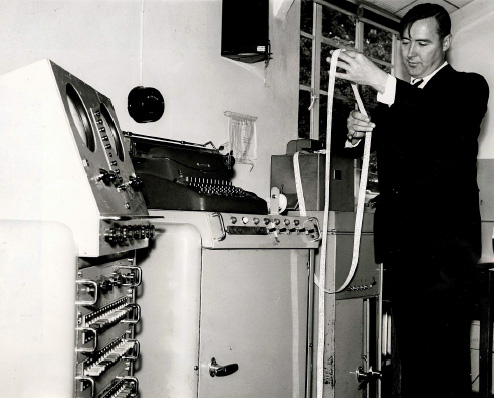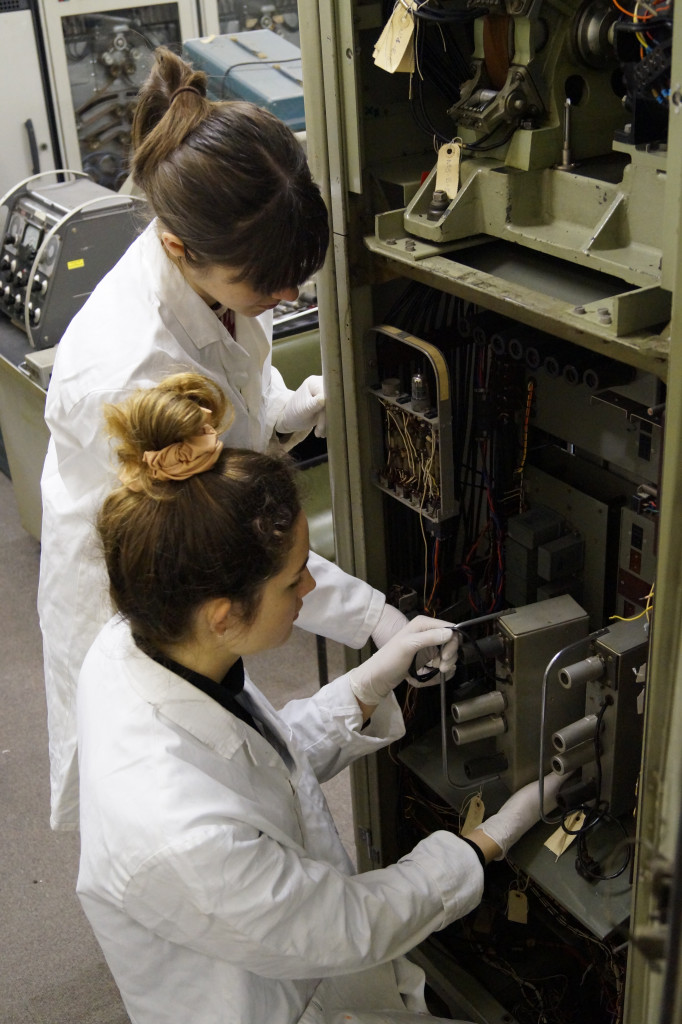As you open a door to the Elliott 401 you are greeted by an excess of electrical components; wires, connectors, sockets and electronic valves. The Elliott-NRDC 401 is one of the first electronic computers, developed in 1952 when machines of this type could span 4 metres in length and weigh over a ton.

Using wartime radar technology the Elliott 401 was considered experimental and as a prototype tested a number of new techniques in computing and mathematical statistics. Initially its inbuilt functions consisted of addition, subtraction and multiplication. There was no capability for text, therefore the results were purely numerical and had to be annotated by hand.

A computer is only as good as the people around it; the Elliott 401 owes much of its success to Douglas Rees, the manager of the machine or ‘computer’ who aided its users when it was operational. At this time the term computer was also given to the people who worked on the technology.
By 1955 a charge of £25 per hour was fixed in place for any users wishing employ Elliott’s functions.
After performing solidly for 12 years, in 1965 the Elliott was donated to the Science Museum.
Today we are still giving the Elliott 401 the same attention at the museum.
The computer will feature in Mathematics: The Winton Gallery, an exciting new gallery opening on 8 December 2016. However, we first need to clean and prepare it after 60 years’ worth of storage.
As a Collections Assistant in the Science Museum’s conservation team I was involved in cleaning the Elliott 401.
Standing at over 2 metres tall the Elliott is a cased metal structure with two console units attached. What I find interesting about this huge machine is its inner-workings; the interior mechanics resemble something so unlike computers today.
The Elliott demonstrates a distinct age in which computing was not only visually constructive but relied heavily on human interaction.

A team of eight people were involved in the cleaning of Elliott 401, including conservators and collections assistants.
We started the cleaning by using a brush and vacuum followed by a soft microfibre cloth to remove the exterior layers of dust. Inside the Elliott 401 sit hundreds of wires amongst connectors and sockets that allow a considerable amount of dirt to build up over time. We swabbed wire after wire using several techniques ideal for picking up residue and dust, including a small putty based material called Groom Stick, a natural vulcanized rubber called Smoke Sponge and a cotton swab coated in distilled water or Industrial Methylated Spirit.
After many hours of cleaning the Elliott-NRDC 401 is now ready to be installed in the new gallery.
Mathematics: The Winton Gallery opens on the 8 December 2016 and will be free to visit. For further information visit sciencemuseum.org.uk/mathematics.
Dominique Russell is a Collections Assistant at the Science Museum.